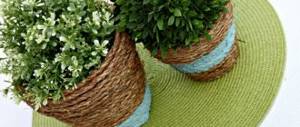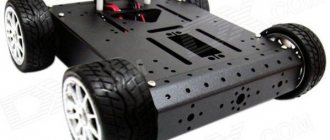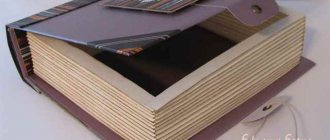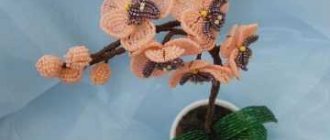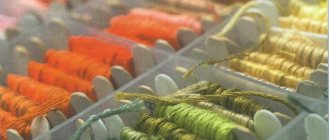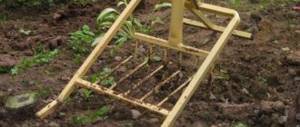How to make a wooden blade at home
.
Hobit blade unexpected journey with your own hands.
DIY wooden blade.
This product is dedicated to all fans of The Lord of the Rings and The Hobbit, or There and Back Again. According to canon, Bilbo Baggins discovers a blade in a troll cave that can glow when orcs approach. The brave hobbit names him “Stinger.” The prototype of this sword can be seen in the film “The Hobbit. An unexpected journey." Step 1: Tools and Materials
Materials:
2x4 30 mm MDF board in the amount of 7-8 pcs. Wood glue Wood putty Cardboard Sandpaper Spray: 1 can of primer, 1 brown, 1 silver Black acrylic paint Scissors Scotch tape
Tools:
Printer (you can do without one if you have good eyesight for defining contours) Hand bow saw X-Acto brand knife Chisel Pencil Soldering iron If possible: Dremel or similar tool
Step 2: Blade and handle
Print
the PDF file.
Cut out the sketches along the contours. Collect a paper sword. Glue it together and place it on a board. Trace the template and use a hand bow saw to cut out a wooden sword with a hilt.
We will need 2 wooden copies of the sword. Cut out 1 more.
Using special glue, we connect the halves and place the blade under a press made of books or something heavy.
Step 3: Ephesus
Print another
PDF file.
Cut out all parts of the hilt.
We perform the same actions from step 1. For each element of the sword you need 2 wooden copies. We get: 8 guards 4 extended handles 4 internal and 2 external heads
Before gluing the entire sword, sand the edges with a Dremel. Then go over it with sandpaper.
Step 4: Handle and Guards
We glue all existing copies of the handles and guards.
Glue 2 handles together.
First we glue 3 guards onto the base of the blade. We cut the other 2 guards so that they fit evenly. Glue the remaining 3 on the other side.
Step 5: Heads
Glue together 4 internal and 2 external heads separately. Then we connect them.
Step 6: Shape
This step can be quite difficult.
We go over the entire blade with sandpaper (starting with 80 grit and moving to 150, 220) to get a realistic shape.
Use a chisel or finer-grit sandpaper. Remember that the 2 sides of the blade should be different in appearance.
Polish the handle and head in the same way.
Step 7: Head Connection
It may be necessary to adjust the opening in the head for a more reliable connection.
We glue the head and handle, and fill the openings with putty. Add it to the location indicated in Figure 2.
Step 8: Runes
Step back 30 mm from the edges of the guard and use a chisel to start making indentations (about 30 mm) for the Sindarin runes.
Mark the outlines of the runes on the cardboard and cut them out. In file
their location is shown.
Glue the runes into the grooves of the guard.
Step 9: Letters
Using the template from step 8, apply the Sindarin writing to the blade of the blade.
Take a soldering iron and carefully trace the elven letters.
Be careful as the soldering iron gets hot quickly. It's better to make several passes.
Step 10: Painting
Apply 2 primer layers, keeping the can slightly away from the product. Spray 1 coat of silver paint.
We wait until the blade dries.
We wrap the guard and handle with newspaper or paper and seal it completely with tape.
Using the template from
the file
, we outline the outlines of the leaves directly on the tape.
Use an X-Acto knife to cut out designs on the handle. Carefully remove the rest of the tape, except for what we cut out.
Apply a layer of brown paint to the handle and guard.
Step 11: Final Detail
Using a small brush, fill the letter indentations on the blade with black paint.
We wait until the letters dry and cover the blade with a silver layer.
Wooden knife
Every avid or novice hunter wants to have a high-quality hunting knife, which is needed not only for slaughtering and cutting up animal carcasses, but also for various types of work in the forest. Commercially available mass-produced knives typically do not stand up to heavy use, and a custom-made dagger tends to be expensive. Therefore, many hunters do not use any other option but to make a hunting knife with their own hands. At the same time, it must have the following characteristics:
- Straight handle for ease of striking when finishing. A sharp blade located in the center (hunting dagger) is often used.
- Blade length ranging from 10 to 15 cm.
- Use of hard steel in manufacturing.
- Handle material: wood, bark, hard non-slip artificial materials with moderate relief. The knife should be comfortable for cutting with forward and away movements, and not slip in your hand.
- There are no additional accessories or functions.
Before making a knife for hunting, you need to choose the right material. If it is steel, it must have the following characteristics:
- The degree of hardness on the Rockwell scale is from 20 to 67 HRC. The harder the metal, the greater its resistance to deformation.
- Impact resistance
- Ductility of steel
- Resistance of metal when exposed to temperature.
The most suitable metal for making a high-quality hunting knife is alloy carbon steel, stamped tool steel with the addition of chromium and molybdenum, damask steel or Damascus steel. Damask steel has the best quality characteristics. If it is not possible to use high-quality source material, you can use metal objects, giving them a second life: a spring, a file, an old garden tool.
Hunting knife
To make a knife for hunting with your own hands from steel, you need to follow the guide:
- The first stage is making a sketch of the future weapon.
- The second stage is forging. The stove or hearth is lit and the steel is heated to a certain temperature. First, a shank is formed to make it more convenient to hold the workpiece. Next, the shape of the tip is formed. The blade should be forged according to the intended sketch, without changing the thickness of the steel.
- Making the handle. It can be stacked or solid. If inlaid, the material for the handle is measured in accordance with the shank, both parts of the handle are applied to it and glued. If the handle is solid, a hole is made in it, then it is glued onto the shank. After this, it should be carefully sanded for convenience. To make the handle, it is best to use fiberglass impregnated with epoxy resin or textolite. They are lightweight and durable, unlike wood, which can be damaged if dropped, or metal, which can freeze when the temperature changes and is heavy.
File knife
How to make a hunting knife from a regular file? For this you will need:
- File
- Vise
- Jigsaw or metal scissors
- Hammer
- Drill with metal drill
- Sandpaper
- Material for the handle (wood, leather, piece of PCB).
First of all, you need to harden the steel. Ideally, a home oven is suitable for this; you need to throw a file into the firebox so that it heats up there for 4-6 hours and then cools down there. A blank for the future knife is made, and a shape is cut out of it from a file. Using sandpaper, the shape of the knife is processed and it is rough sharpened. On the wooden plates that will serve as the handle, holes are made for attaching to the knife using riveting. The pads must first be coated with epoxy resin. The handle can be shaped using a jigsaw. After this, the knife is polished and polished with sandpaper, and final sharpening: first on a sharpening machine, then again with sandpaper. You can polish your resulting blade using felt or polish.
Wooden knife
Wood can be used as a cutting tool, especially when traveling. To make a wooden knife with your own hands, you need to use chips and flakes of coniferous branches that have a sharp cutting edge or other durable and high-quality wood. The process of making a knife from wood with your own hands is simpler than a steel one: you need to prepare a sketch you like on paper, which is transferred to a wooden canvas. Wooden knives are usually made monolithic. After this, the handle and blade are given the desired shape using a chisel or file, and the blade is sharpened. The finished product is varnished or fired.
Another option for making a wooden knife is to make it from medium-thick plywood. Similar to the work described above, first a sketch is made. Then you need to prepare the three components of the blade: the blade and two parts of the handle, consisting of a round holder and a support plate. The blade is sharpened and the handle is processed with a file and sandpaper to remove any rough edges.
More video
Mostly knives are made of steel. But sometimes craftsmen use other materials to make cutting tools. You can often see sets of ceramic and wooden knives on store shelves. Such blades have their own special purpose.
They are presented in a fairly wide range on the market. Those consumers who want to save money or like to craft can make them themselves. Information on how to make a wooden knife with your own hands is presented in the article.
About the purpose of the product
Modern kitchen utensils are equipped with a special non-stick coating. Such dishes will last a long time if the owner is as careful as possible during its operation. To do this, you have to work with such equipment only with certain cutlery.
One of them is a wooden knife. It can be used when working with modern frying pans and pots without fear of damaging their non-stick coating. Unlike similar products made of glass, plastic and silicone, a wooden knife is considered environmentally friendly. It is mainly used for cutting minced meat.
The need for such a product forces some thrifty consumers to think about how to make a wooden knife themselves. Unlike a classic blade made of metal, making a knife from wood is much easier: this procedure is less labor-intensive. Knowing the technology, you can create quite good wooden knives. Photos and instructions for making such products are offered below.
What will you need for work?
To make a wooden knife with your own hands, a craftsman cannot do without the following tools:
- wooden hammer;
- saws or jigsaws that will be needed to cut out the workpiece;
- pencil;
- chisels;
- cutting knife;
- sandpaper;
- one wooden block.
The first thing experienced craftsmen do is prepare a wooden block. The workpiece must be thoroughly cleaned of bark. You also need to have an idea of what the design of a wooden knife should be. After the master has decided on the size and shape of the future product, a drawing is drawn on the surface of the bar.
What is a marking tool?
A marking knife for wood is necessary for drawing lines along which the cut will be made with another tool, including an electric one. And therefore it is a tool with the following parameters:
- long straight handle;
- a beveled or arrow-shaped blade measuring 3.2-3.5 cm, width 1.4-1.5 cm;
- total size about 20 cm;
- double-sided or single-sided blade sharpening;
- tip at 40-45 degrees.
The tools are more precise than pencils in marking due to the thinness of the blades and narrow point. The cost of this is 800-1100 rubles.
Plywood product
To work, the master will need a sheet of plywood. It needs to be divided into three parts. On each of them there are drawings of the details of the future knife. On one piece of plywood you should draw the shape of the entire product, and on the other two - the shape of only the handle.
Using a jigsaw, all three elements are carefully cut out. The resulting two stencils with the image of a handle must be attached on both sides to the first stencil - with the image of a knife. Then, using metal pins or other fastening devices, all three parts are connected to each other.
The resulting product can later be painted and varnished. This knife is considered a souvenir. It can be used as a decoration, not a kitchen appliance.
Gift option
According to experienced craftsmen, a beautiful and durable wooden product can be made from linden, cherry and ash. You need to start with a sketch. The master must calculate the dimensions of the blade, handle, guard and crossbar - one of the important elements in the design of a hunting knife, separating the cutting part and the handle.
After the sketch is ready, a blank is cut out of the solid wood using a circular saw. The product is shaped by hand. A regular or special knife is suitable for this purpose. The second option is preferable, since such a blade is an oblique blade, which is very convenient to work with.
The central part of the blunt end of the blade must be equipped with a special hole. The mounting pin will be inserted into it. Using the sketch, the master makes the guard. The material for this element will be a separate board.
The guard is cut using a jigsaw. A hole is also drilled in it for the mounting pin. After this, the guard should be put on the blade. For the handle of a hunting knife, any type of wood is suitable. If the master plans to make a round-shaped handle, then it is advisable to use a lathe for the work.
According to some owners of such products, a homemade wooden knife will be much more comfortable to hold in your hand if its handle is made flat. After processing on a lathe or using a chisel, a hole is drilled in the handle for the mounting pin. Its diameter should correspond to the hole in the blade itself.
The knife is now ready for assembly. At this stage, craftsmen use a pin and wood glue. When it dries, the product is carefully sanded using sandpaper. This knife will look much more impressive if it is varnished.
Many craftsmen apply beautiful designs and monograms to the handles of their products. In addition, some people stick leather appliqués on their handles. For comfortable carrying, real hunting knives made of steel are equipped with sheaths. You can take advantage of this and sew a similar device for a prop product. When placed in a case, a wooden knife will look like a real one.
Good day! Today's article is about how to do
- yourself
shoemaker's knife (or rather, a type of it) . This knife is a must-have tool in the arsenal of any woodworker/carpenter/shoemaker.
To make a similar craft
you will need:
- A strip of high carbon steel (in my case XC75).
- An angle grinder (grinder) with a cutting disc or a hand hacksaw for metal;
- Files/belt sander/sander;
- Two brass pins with a diameter of 6 mm;
- One brass tube with a diameter of 10 mm;
- Two-component epoxy adhesive;
- Hardwood for cheeks (linings);
- Clamps/clamps;
- Square;
- 600 and 1000 grit sandpaper;
- Drying oil;
- Ruler and marker;
- 20 cm (10 inches) flat leather cord.
First, let's decide on the size of the knife. We'll use a caliper to mark a strip 3 cm (1.2 inches) wide. Do not make the marking line too deep, otherwise it will be difficult to remove. You can also use a ruler and marker. The most important thing is to get a straight marking line.
Let's secure a wooden block as a guide. Using a grinder, cut a strip of steel to the specified width. The length of the strip was 15 cm.
After this, we cut the strip of steel into blanks of a given length.
If you decide to make several knives at once, then follow the next step. If you are only making one knife, you can skip this step.
We will use double-sided tape to secure the pieces together. For greater reliability, we secure them with two clamps.
Align the edges with a file or belt sander to get exactly the same workpieces.
Let's draw a center line and then draw a triangle.
The shape and angle of the blade will depend entirely on your wishes/needs.
Using a sander/file, give the workpiece a triangular shape.
Let's draw a semicircle at the other end of the workpiece and grind it.
Using a punch, we make marks for the holes that need to be drilled for the pins.
Drill the centering holes with a small drill. Remember to use oil/WD40. Then drill the holes to the required size.
Pins will be mounted in the holes located closer to the end of the blade. A brass tube will be installed in the outer hole.
Now we can give the blade its final shape using a belt sander, sander, etc. But I recommend using a simple file. By manually forming the blade bevels, you will not make mistakes and will get bevels with the same angles.
Slowly, let's form a descent on one side, then take on the other side. Try to keep the same angle. Don't worry about possible errors, you can always correct them.
Once you are happy with the shape of the knife, clean the edges of the blades using a finer file. You can modify the shape of the blade before heat treatment. When both sides are completely identical, you can move on to the next step.
The XC75 must be annealed in oil at a blade temperature of 790-810ºC / 1454-1490ºF (blade color should be between red and bright red). Let's heat it with a burner. While heating, try to avoid the flame coming into contact with the tip of the blade. It should warm up from the main part of the handle.
Once the color turns bright red, quickly cool the blade in the oil. (be sure to wear protective equipment and a respirator).
In order to check the hardening, we use a file. If you hear a clear sound and the file does not scratch the blade, the hardening was successful and you can move on.
Clean the burnt oil from the blade with sandpaper (I used 600 grit). This will allow you to see the color of the blade after tempering. “If you love a knife, let it go.” Tempering is needed to relieve stress in the steel after hardening. Otherwise it will be hard and may break. Place the blade in the oven for one hour at 230ºC / 446ºF. The color of the blade should now be between light yellow and blue.
Let it cool overnight.
Finish the surface of the blade using sandpaper (600 and 1000) glued to a flat surface. You can also wet the paper to make sanding easier.
Now it's time to start making cheeks for the knife. For all three knives I used different types of wood: mahogany, wenge and Japanese beech.
Cut two strips 3 cm wide (the width of the blade).
You will also need two 6mm pins and one 8mm brass tube to secure the guards to the blade.
We use double-sided tape to attach the blade to one pad. We drill holes.
Remove the blade and fasten both pads together. Then we'll drill the holes again in the second half. This way all the holes will be aligned and assembly will be very easy.
Let's make slopes on the “cheeks”, forming them in accordance with the shape of the blade.
Mix two-component epoxy glue.
Let's glue the pads to the blade using epoxy resin and the pins we made earlier. Remove any excess glue with a paper towel.
Let's clamp the knife in the clamps. In order not to scratch the surface of the “cheeks”, we attach wooden blocks to the pads.
Let everything dry overnight.
Once the epoxy has completely cured, remove any excess material (wood or brass).
We sand the linings with a grinding machine/sandpaper.
Upon completion, saturate the wood with drying oil or beeswax.
Small leather straps allow you to hang your knives on the wall without scratching the blade or dulling the cutting edge.
That's all! Thank you for your attention)
The list of modern kitchen knives includes products not only made from the usual steel. They are made from ceramics and wood. We will also make a wooden knife with our own hands in this master class. This is a very convenient knife for slicing soft and delicate products: cheese, butter, baked goods, such as filled pies. When slicing, such a knife allows you to avoid damaging the surface of a baking sheet or pan with a non-stick coating. It is very convenient for them to prepare sandwiches by spreading butter on bread or toast.
Materials
To work you will need:
- board;
- mineral oil for wood processing;
- sheets of paper;
- rags;
- band saw or jigsaw;
- Sander;
- sandpaper.
Step 1
. First of all, you need to prepare a model of the knife. You can do this by drawing it entirely manually or using graphics programs.
Step 2
. According to the applied layout, you will need to cut out a blank for the knife. You can do this using a special laser machine. A similar service is provided by woodworking workshops. There is also an option to work manually. To do this, you will need to glue the template to the surface of the board and cut out the base with a jigsaw or band saw.
Step 3
. You will need to process the resulting workpiece with a grinding machine. The main part of the work is sharpening the wooden blade. In terms of labor intensity, the process is comparable to sharpening a steel knife blade.
On the one hand, the wood is sharpened much faster, on the other hand, the slightest flaws can negate the work and you will have to sharpen it again, but on a different base.
Work gradually, constantly checking the thickness and bevel angle of the blade. When working, adjust the speed of rotation of the sanding belt of the machine and the force of your own pressing.
Step 4
. Once the wood blade has been sharpened, take sandpaper and continue sanding the knife by hand. If you also used laser cutting, sand down the characteristic scorched edges. If not, just sand all surfaces smooth.
Step 5
. Wipe the resulting knife with a rag, getting rid of the smallest particles of dust and debris formed during work.
Step 6
. Treat the knife with mineral oil. To do this, apply oil to the surface of the knife with a paper towel or a clean rag and leave it to soak for 40 - 45 minutes. After this, remove the excess and thoroughly polish the surface with a clean rag.
To make a wooden knife serve you longer, you must follow a number of simple rules:
- The product should only be washed by hand, wipe dry immediately after washing and leave for a short time on an open surface to dry completely;
- the knife will need to be periodically treated with oil to preserve its consumer qualities.
Other types of carver tools
A carver's tool is any of the following:
- hatchet,
- shtikhel,
- chisels,
- flag knife,
- jamb,
- universal,
- for geometric carving.
Hatchet
The hatchet is named so because its blade is shaped similar to the main part of an ax and at the same time a construction spatula. This tool can do any job using:
- a point for cleaning out recesses;
- the middle part of the blade for cutting convex parts;
- “heel” for cutting in any direction.
Despite the versatility of the tool, it is rarely found in sets. After all, to own it and use it for different types of work you need experience.
The cost of hatchet knives varies from 600 to 1100 rubles. and depends to a large extent on the size of the gun (smaller is cheaper).
Stichel
As the hero of the famous film said, “there is a difference between a graver,” because the tools for working with wood of this type differ from each other:
- Dimensions of the working part. The length varies from 4 to 12 cm.
- Form. There are flat beveled rods, flat straight rods, semicircular rods, curved rods, oval rods, and with different angles.
The weapon is a metal rod with a sharply sharpened tip. Its handle has the shape of a mushroom, and during use its pommel rests on the palm. Stichels are used to perform jewelry work on wood - openwork patterns, thin lines of various configurations.
The cost of a single copy is 350-600 rubles. But more often, gravers are sold in sets of 3-12 pieces. And their price is 2000-7500 rubles.
Chisels
Chisels are a bit like chisels, but they are larger and are used for other types of work:
- gouging out grooves;
- chamfer formation;
- carving along pre-drawn lines;
- cutting out voluminous rounded parts.
There are several types of tools, differing in blade shape:
- at the corner ones it forms the letter V, so the chisel is used to make recesses in the wood of the corresponding shape;
- flat ones are thick and thin, they are also used to create simple grooves of different depths and cut out small parts;
- semicircular ones are necessary for making ornaments and cuts;
- staples have a flat base to which sides are attached; they are needed for cutting rectangular grooves;
- the reverse ones are a curved metal sheet; they are used to make a convex pattern on a plane.
The cost of a set of chisels ranges from 300 to 13,500 rubles. There are from 3 to 23 pieces in a set, but the price also depends on the quality of the instrument.
Flag knife
The flag knife has a small, wide blade shaped like a triangle. It is attached to the handle at an angle, and the base is at the top, this is the blade.
The flag is used for geometric carving, when it is necessary to make small patterns, thin lines and indentations. Blade tips are used in this work. And the main blade makes even cuts and cuts.
The flag can be slotted or threaded. The first has one edge of the main blade noticeably higher than the other. Therefore, it is better suited for making through holes. And a rifled one is needed to draw grooves and recesses on a plane.
The price of a flag knife is 600-900 rubles. Sometimes you can buy a set of products of this type in different sizes for 5000-6000 rubles. (7 pieces).
Jamb
The jamb comes not only of the traditional type - with a fairly wide blade consisting of straight lines. This part is also made narrower, with a reverse bevel, a radius notch at the base of the blade for trimming rods.
Since the tool is intended for different jobs (best suited for removing large volumes of wood), it must be sharp. That's why a good blade is made of carbon steel. And it can cost from 800 to 1200 rubles.
Universal
A universal knife for wood carving is a cutter that:
- butt, curved in such a way that its line rises upward;
- The blade sharpening angle is 35 degrees;
- its line from the base goes down, and then also goes up;
- extended handle.
The parameters allow the tool to be used equally successfully for fairly rough work and for cutting out and honing details of a sculpture, panel or figurine. Cutters are also available with double-sided sharpening. The cost, regardless of the number of blades, is 600-1000 rubles. for 1 copy.
Simple manufacturing instructions
To learn how to make a knife from wood, here are a few tips and recommendations shared by masters of their craft:
- First of all, you need to figure out which wood is best to create the product from. According to experts in this field, it is best to use a durable species, such as ash or linden, to make a wooden base. This type of wood not only has sufficient strength, but also has a beautiful natural cross-sectional pattern, which will help create a finished element with an interesting design design.
- To simplify the progress of the work, it is better to make drawings in advance. A life-size sketch can be drawn on a piece of paper, adding the following data:
- finished blade length;
- guard and handle parameters;
- the number of crossbars that should separate the handle and blade.
- Having decided on the length of the future knife, you need to select a wooden block that matches the length of the blade, and use a circular saw to cut a preliminary blank from it.
- The resulting workpiece must be shaped manually using a standard knife or its equivalent, which is equipped with an oblique blade used for wood carving. To make the surface smooth, it is convenient to use fine sandpaper.
- To attach the blade to the handle, you need to make a hole in the center of the blunt part of the blade, taking into account the diameter of the fastener, which will later be used for its intended purpose.
- Adhering to the previously made drawing, you need to cut out a guard from a wood base of a suitable size and make several holes for fasteners on its surface. The finished guard should be easy to put on and remove from the blade.
- To make a handle, you can use any wood base, giving it an interesting shape. If you want to make a round handle, it is more convenient to bore the wood on a lathe. However, it is worth keeping in mind that the flat version is much more convenient to manufacture and more practical to use.
- In the center of the handle you need to drill a hole for fastening the same size as the previously made hole on the surface of the blade.
- For reliable assembly of all elements, you will need both pins and special wood glue. Sanding should begin after the adhesive base has completely dried.
If desired, you can varnish the blade and apply a unique design to the handle using a monogram. As decoration, you can use applications of various themes, the elements of which are best cut from genuine leather.
To ensure that your new knife retains its attractiveness for a long time, you can sew a cover for it. To make it, you should also create a sketch in advance, entering into the drawing the dimensions of the future cover, which exceed the parameters of the finished product by several centimeters. Any material is used as a base, for example, a leather substitute or a durable fabric base.
You can make a knife from wood in other, easier and less labor-intensive ways. But using the option discussed above, the finished product will turn out to be more impressive, very reminiscent of a designer model. Therefore, do not be afraid of difficulties and give free rein to your imagination!
DIY stone knife
The material for making a knife blade can be flat-shaped rocks, such as slate, flint, obsidian, quartz. Layered mineral rocks can easily replace steel with their sharp cutting edge. To make a weapon, you will need a stone one and a half times larger than the original product, without cracks or defects. It needs to be split at an angle of up to 90 degrees so that a flat surface is obtained. After achieving the desired flat shape, you can process the handle by wrapping it with available materials or encasing it in wood. At home, the stone is processed with a hammer. The stone is placed on a flat, hard surface covered with felt. Thus, it will not vibrate from impacts and move. The final formation of the blade can be done with pliers, breaking off piece by piece from its edge. The handle must be attached using epoxy resin, which can be wrapped on top with strips of leather or fabric. A stone knife is not afraid of corrosion, is very sharp and does not require sharpening, but a fall from a height can lead to its splitting.
Hello, hello, friends! Are you ready to plunge into the world of wood? Today we will try to make a knife from wood.
Master class rating 4 out of 5 based on 2346 votes.
Method 1: In this video I will tell you how to make a gradient bayonet knife from wood from the game CS:GO! Enjoy watching! My VK: My Steam: Template: Thank you!
Method 2: In this video I will tell you how to make a folding knife with the “Tiger Tooth” coloring from the game CS:GO! Csgo-republic.ru Enjoy watching! My affiliate: My VK: My Steam: ... Our group VK: Trade: ... Template: Thank you!
Method 3: In this video I will tell you how to make a Hunting knife from wood from the game CS:GO! Enjoy watching! My VK: My Steam: Trade: Template: Thank you!
Method 4: In this video I will tell you how to make a Bowie Knife (long hunting knife) from wood with a bloody web color! Enjoy watching! Karacatica TV: ... My affiliate: My VK: My Steam: ... Our group VK: Trade: ... Template: Thank you!
Method 5: Random keys: In this video I will tell you how to make a Butterfly Knife from wood from the game CS:GO! Enjoy watching! My VK: My Steam: Trade: Template: Thank you!
Plywood knife
The simplest version of a knife can be made from ordinary plywood. Children will enjoy playing with this attribute.
To make a simple model you will need to take the following steps:
- From medium-thick plywood you need to cut two parts for the future handle and one for the blade.
- To make it more convenient to cut out elements, you should make a stencil for each part.
- Holes for fasteners are made at the base of the blade and on both sides of the handle.
- For fixation, you can use either metal fasteners of the appropriate size or any available elements.
It is a good idea to decorate the upper part of the plywood knife with any decor or apply a layer of quickly drying varnish. You can also invite your child to draw something with paints, and then open the image with varnish.
By following the recommendations and creating a knife according to step-by-step instructions, every home craftsman can easily create a knife that he can be truly proud of. If any difficulties arise during production, we suggest you find a hint or answer to any question in the training video tutorial on the topic of making knives from a wooden base.
Making a knife
Making a knife out of wood is quite a difficult task if you immediately take on more complex models and hardwoods. However, beginners can try simpler options. An ordinary kitchen knife or bayonet knife can be made from plywood.
Product sketch.
For work it is worth using medium-thick plywood. The creation process is extremely simple. At the first stage, you need to make a sketch of each individual part. Having cut out the part from paper, you should attach it to the plywood, and then make each individual element.
This blank includes three elements: a blade and two parts for the handle (a round holder and a support plate). After all three elements are cut out, they need to be processed.
The edges of the elements that are intended for the handle must be processed with sandpaper or a fine file to hide all the irregularities. The blade is processed, but the lower part is sharpened so that it is stable. This will add functionality to the product.
Finally, you need to glue all three elements into a single structure. If you wish, you can decorate the entire product with various patterns. Using the same scheme, you can make a hunting knife from wood. This product is quite simple to make, but it does not have a very attractive appearance.
There is another option, which is made from cheap materials, but its design is much more complicated. We are talking about a butterfly knife.
In order to make it, you will need ice cream sticks. A butterfly is a product that has a blade. When closed, it is hidden in the handles. In order to open the device, you need to turn each handle 180°.
How to make a folding knife from wood? It's very simple: you will need 4 regular-sized ice cream sticks, one large stick, a few toothpicks and glue. On a large stick, in accordance with the planned sketch, you need to draw a drawing of the blade and cut it out.
Small sticks do not need to be processed; they are ideal for this purpose. At a short distance from each other, you need to glue two sticks together, between which there will be toothpicks. This will give you two handles and a blade. Then all that remains is to connect all three elements, and the knife is ready.
